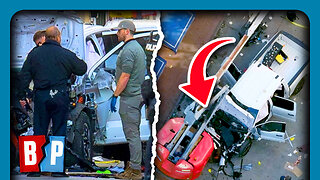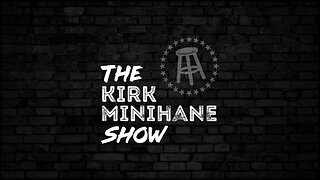Premium Only Content

Why Some Boats Have Awful Steering Capabilities.
Unlocking Precision: The Art of Steering in Boats
Navigating the waterways is an art, and the key to mastering it lies in the intricate dance between propellers and rudders. For boats propelled by inboard engines with a prop shaft, steering challenges can arise, particularly if the propeller is positioned too far from the rudder or if the rudder itself is undersized.
The dynamics between the propeller and the rudder play a pivotal role in a boat's ability to execute precise turns. Unfortunately, this delicate balance is often overlooked in many boat designs. In contrast, sailboats, with their larger rudders, boast exceptional steering ability, gracefully gliding through the water, especially when tacking.
Sailboats highlight the symbiotic relationship between the sail and the rudder, underscoring the significance of thoughtful design in enhancing steering capabilities. This emphasis on design extends to all types of boats, irrespective of their propulsion system.
Outboard engines and stern drives excel in steering at high speeds, providing a thrilling experience on the water. However, they face a significant drawback—loss of steering ability at very low speeds or when halted without a rudder. During engine failure or drifting, these propulsion systems become ineffective for steering, exposing a vulnerability that demands attention.
To address the limitations of outboard engines and stern drives, retrofitting a rudder becomes imperative. The addition of a rudder enables these boats to maintain some degree of steering control, particularly during low-speed manoeuvres or in the unfortunate event of an engine failure. The size of the rudder emerges as a critical factor, highlighting the importance of a well-proportioned adaptation for optimal effectiveness.
Propeller size is another essential consideration when evaluating a boat's steering capabilities. An undersized propeller can significantly diminish a boat's ability to respond to steering inputs, resulting in sluggish and unresponsive manoeuvring. Thus, whether powered by inboard engines, outboards, or stern drives, every type of boat should be equipped with a rudder.
Beyond enhancing steering, a rudder serves as a crucial tool for maintaining control during unexpected scenarios, such as engine failure and drifting. The steering capabilities of a boat are intricately linked to its propulsion system and the presence of a well-designed rudder. Therefore, whether in the initial design or through retrofitting, careful consideration of the dynamics of steering is essential to ensure a safe and enjoyable boating experience.
In conclusion, unlocking precision in steering is not just about speed but about the harmonious interaction between a well-sized propeller, a properly proportioned rudder, and a thoughtful boat design. As boating enthusiasts, let's navigate the waters with finesse, appreciating the art and science behind every turn.
-
 LIVE
LIVE
cbsking757
3 hours ago★TANKING RIVALS RANKED! GIFTED SUBS ARE LIVE! #marvel #marvelrivals
162 watching -
 4:04:55
4:04:55
Tate Speech by Andrew Tate
11 hours agoEMERGENCY MEETING EPISODE 99 - 2024 - TIME VACUUM
189K101 -
 26:14
26:14
Breaking Points
3 hours agoSH*TSHOW: FBI Retracts False Info on NOLA Attacker
39.8K26 -
 56:35
56:35
The Dan Bongino Show
6 hours agoReprise: Best Episode Of 2024 - 01/02/2025
220K1.18K -
 16:04
16:04
Tundra Tactical
2 days ago $1.05 earnedHow Palmetto State Armory got so BIG!
18.2K2 -
 25:19
25:19
Feeding the Byrds
3 hours ago3 EASY DINNERS for a BUSY week! | Easy dinner inspiration
17.4K -
 6:44
6:44
SLS - Street League Skateboarding
7 days agoYuto Horigome’s 2nd Place Finish at SLS Tokyo 2024 | Best Tricks
41.2K2 -
 LIVE
LIVE
hambinooo
5 hours agoTarkov Thursday
311 watching -
 2:22:31
2:22:31
The Kirk Minihane Show
7 hours agoKMS LIVE | January 2, 2025 - ft. Blind Mike & Beer Stud
70.1K3 -
 46:12
46:12
Grant Stinchfield
1 day ago $3.29 earnedWhere is DOGE When You Need it? Billions Wasted, Newsom Smiles!
33.9K12